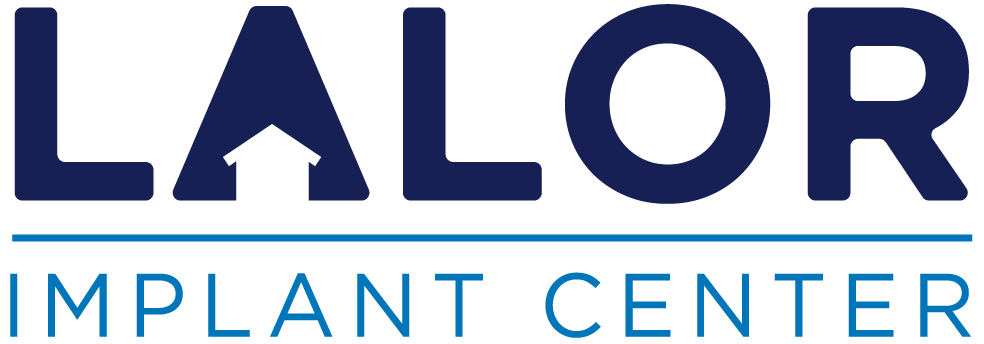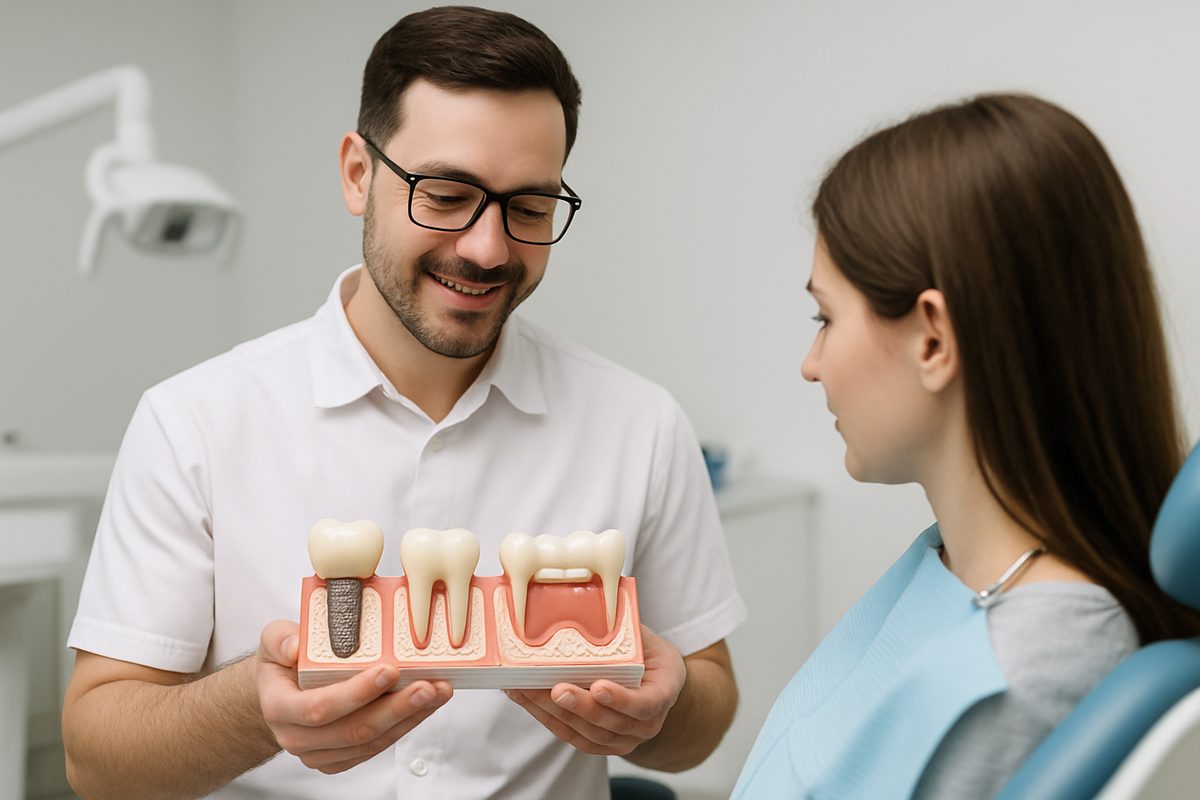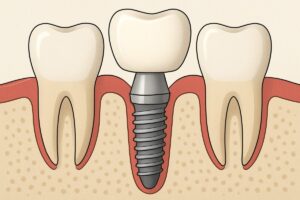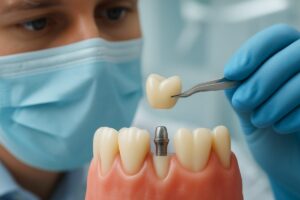how can you replace a missing tooth — this guide shows four common ways and what to expect. You’ll learn the pros, cons, costs, and who is a good candidate for each option so you can talk with your dentist and choose the best plan.
Why Replacing A Missing Tooth Matters
Losing a tooth affects chewing, speech, and your smile. If you wait, nearby teeth can shift and bone in the jaw can shrink. That bone loss can complicate future replacements and change facial support. Replacing a tooth sooner helps preserve function, appearance, and oral health.
Option 1: Dental Implant (The Long-Term Solution)
What a single-tooth implant involves
A dental implant replaces the root with a titanium post placed in the jaw. After healing and integration, an abutment is attached and a crown is placed. Many steps are done with imaging and guides for precise placement.
Pros, cons, and timeline
Implants preserve bone and look and function like a natural tooth. They can last decades with good care. Downsides: higher upfront cost and several months of treatment time for healing. Sometimes bone grafting is needed, which adds time and cost.
Who is a good candidate?
Good candidates have healthy gums, enough jawbone, and controlled medical conditions. Smoking and uncontrolled diabetes can affect healing. A dental exam and 3D imaging determine if an implant will work.
Option 2: Fixed Dental Bridge
How a bridge works
A fixed bridge uses crowns on the teeth next to the gap to support a false tooth. An implant-supported bridge uses implants instead of natural teeth for support.
Pros and cons
A traditional bridge is faster and usually less costly than an implant. But it requires altering healthy adjacent teeth and does not stop jawbone loss under the missing tooth. Bridges last many years but may need replacement over time.
Option 3: Removable Partial Denture
Removable partials use clasps or flexible materials to replace one or more missing teeth. They are affordable and quick to make. Downsides include less stability, possible irritation, and the need for daily cleaning. They are a good temporary or budget-friendly long-term option for some patients.
Option 4: Resin-Bonded (Maryland) Bridge & Temporary Solutions
A resin-bonded bridge uses wings bonded to adjacent teeth and is often used for front teeth. It’s conservative because little tooth structure is removed, but it’s not as strong as a traditional bridge. Temporary options like flippers can restore appearance while you plan permanent care.
Comparing Your Options: Quick Checklist
– Durability: Implant > Fixed bridge > Resin-bonded > Partial denture – Cost range: Implant (highest) → Bridge → Partial denture (lowest) – Treatment time: Partial denture (fastest) → Bridge → Resin-bonded → Implant (longest) – Bone preservation: Implant best; others do not prevent bone loss – Maintenance: Implants and bridges clean like natural teeth; partials require nightly care
How To Decide Which Option Is Right For You
Consider oral health, jawbone levels, budget, esthetic needs, and time. Diagnostics like X-rays and CBCT 3D imaging help plan safe, predictable care. Your dentist will review options and create a personalized plan.
About Lalor Implant Center & Dr. Joe Lee (Why Expertise Matters)
Lalor Implant Center in Vestal, NY offers advanced imaging and digital workflows to plan treatments precisely. Dr. Joe Lee, a board-certified prosthodontist, specializes in implant and reconstructive dentistry and uses CBCT, CAD/CAM, and 3D printing for better outcomes.
Next Steps & Call To Action
At a consultation you’ll get an exam, imaging, and a clear treatment plan. If you’re asking how can you replace a missing tooth in Vestal, NY, schedule an evaluation to review your options and find the best solution for your needs.






